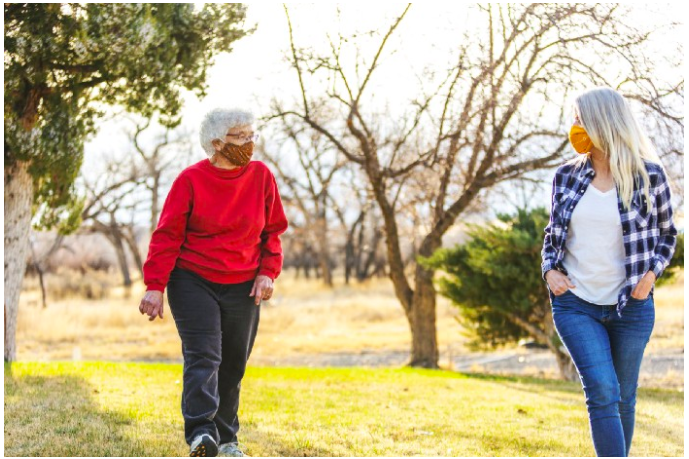“边走边谈”可能是未来的一种治疗手段
By Assad Abderemane
Will more people start walking with their therapists?
 Photo: eyecrave/Getty Images
Photo: eyecrave/Getty Images
If you’ve ever taken a long walk with a close friend and talked about difficult personal problems, you get the gist of “walk and talk” therapy.
Denice Clark, PhD, a therapist based in Atlanta, has been providing walk-and-talk therapy professionally since 2015. A few months after the pandemic hit, therapists started contacting her about how best to offer this kind of therapy to their clients. “Therapists and clients alike are getting tired of online therapy,” she says, “so walk-and-talk seems to be the one way they can meet in person while feeling safe in the midst of the pandemic.”
It makes sense that this type of therapy is on the rise: There’s strong evidence that spending time with other people outdoors is relatively safe, plus research shows that eye contact can increase anxiety levels, which suggests that walking side by side with a therapist (with masks and appropriate distancing, of course) could feel more comfortable for some folks.
Thanks to months of isolation, record-breaking unemployment rates, and the absurdity of a death toll that keeps on going unchecked, the mental health fallout of Covid-19 has been and will continue to be huge. “The virus and the kinds of stresses it creates have complicated the reasons why people have decided to come to therapy at this point in time,” Clark says. Though it’s never the only reason, she thinks that what really puts people over the edge, and what might ultimately drive them to seek therapy for good, is when pandemic life starts affecting their relationship, their work, or simply their ability to function on a daily basis. As they look for therapeutic ways to feel better in a world where a pandemic has upended their livelihoods, people realize that they need their lives to be, quite literally, a walk in the park again.
Walk-and-talk therapy has also proven to be a stress reliever for people who don’t consider their home a safe space for online therapy — whether they can’t find enough privacy to feel comfortable opening up, or their family or partner disapproves of therapy, or someone they live with is the reason they’re seeking therapy in the first place.
Research shows walking helps reduce the likelihood of Alzheimer’s disease and dementia, along with many important aspects of brain health.
Proximity to nature is a hallmark of walk-and-talk therapy. “People bring up things in walk-and-talk sessions that never come up in face-to-face office settings,” and they’re better able to assimilate the milestones they reach because they tie them in with the natural environment they interact with.
更多精彩内容请关注小译号【Elemental】